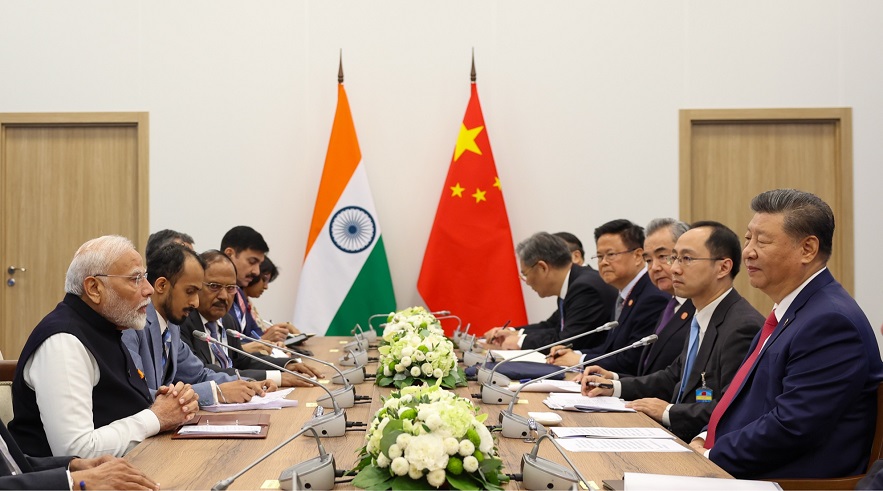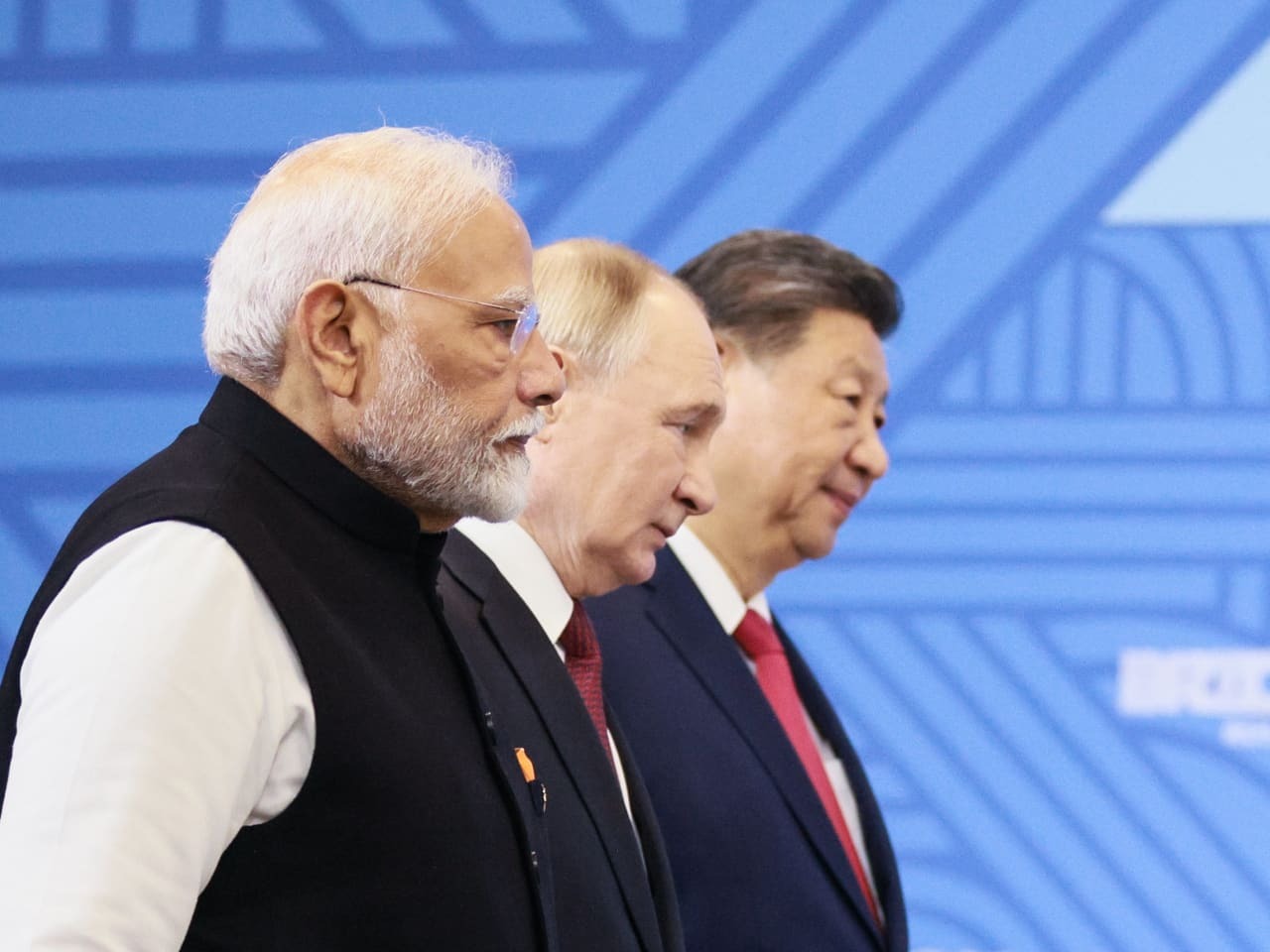China, India on Path to Peace: Xi, Modi’s First Talks in Five Years Aim to Solve Differences

Chinese President Xi Jinping and Indian Prime Minister Narendra Modi agreed on Wednesday to expand engagement and strengthen their partnership and resolve disputes to improve bilateral ties that have deteriorated since a deadly military clash in 2020. The leaders met on the sidelines of the BRICS summit in Russia, their first formal talks in five years. The move marks the start of a recovery in ties between China and India after a diplomatic rift over tensions on their disputed Himalayan border.
How Kazan Meeting Changes Course of India-China Relations
India and China, the world’s two largest economies, continue to maintain strong trade relations despite military and diplomatic tensions. The rapprochement is expected to pave the way for increased Chinese investment in India.
The Indian side confirmed that both leaders had instructed their representatives to take additional steps to stabilise all aspects of bilateral ties. The meeting between Xi and Modi in Kazan came two days after India said it had reached an agreement with China to end a four-year military standoff in the Himalayan region of Ladakh, although details of the deal were not made public.

The Chinese leader said both sides should increase communication, cooperate, resolve conflicts and realize their development dreams. Modi, in turn, offered his ideas for improving relations, which Xi Jinping largely agreed with, Chinese state television CCTV reported.
Modi also stressed the importance of peace, stability, trust and respect to strengthen bilateral ties, saying, “We welcome the agreement on the issues that have arisen over the last four years. Maintaining peace should be our top priority and border calm, with trust and respect as the foundation of our relations.”
Diplomacy amid military tensions: China and India move to normalize ties
Relations between the world’s two most populous countries, which are also nuclear powers, have deteriorated significantly since a clash along the largely unmarked border in the western Himalayas in 2020 that left 20 Indian and four Chinese soldiers dead. Both sides have deployed thousands of troops and significant weapons along the icy border over the past four years. Modi and Xi have not held formal bilateral talks since then, although both leaders have participated in multilateral forums. The last formal meeting at the highest level was in October 2019 in Mamallapuram, southern India.
The leaders also briefly exchanged words at the G20 summit in Bali in November 2022, and then met again on the sidelines of the BRICS summit in Johannesburg in August 2023. However, both sides issued different statements after the meeting, which may indicate different views on current issues.
Xi Jinping did not attend the G20 summit in New Delhi, which was widely seen as a further blow to China-India relations. However, diplomatic efforts have intensified, especially after the two countries’ foreign ministers met in July and agreed to step up talks to ease border tensions.

India has linked improved political and economic relations to a resolution of the border conflict. In response to the clashes in Ladakh, New Delhi has stepped up monitoring of Chinese investment, suspended direct flights and effectively stopped issuing visas to Chinese citizens.
Speaking in Kazan, Indian Foreign Minister Vikram Misri expressed cautious optimism, noting: “The return of peace and stability in the border areas will create opportunities for normalization of bilateral relations.”
